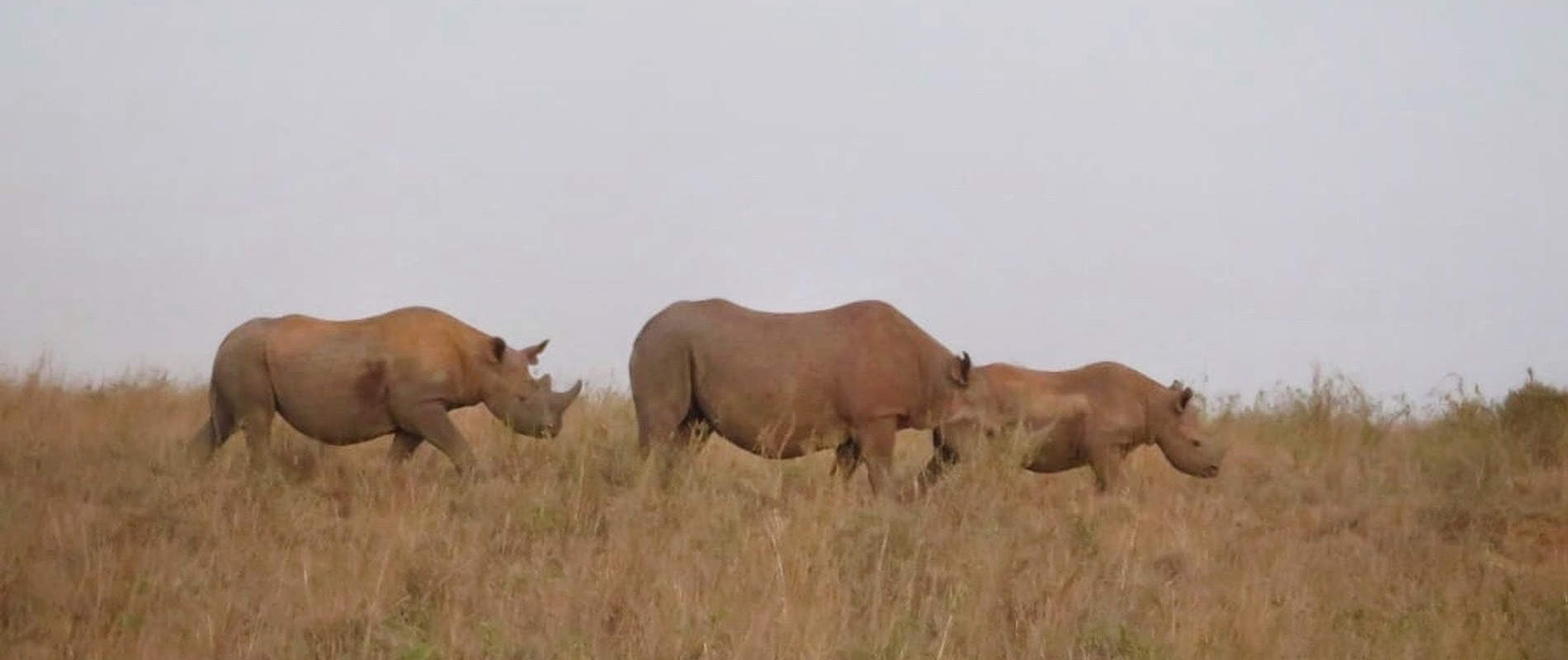We were treated to a rare sighting of Solio and her offspring, Sultan and Savannah! The KWS Corporal assigned to the Nairobi National Park Rhino Monitoring Team spotted them during a patrol yesterday morning. It is very special to see all three together — a perfect family portrait, and a picture of health.
Solio’s story began in 2010, when the demand for rhino horn was at an all-time high. Across Kenya, rhinos were ruthlessly targeted by poachers. Solio’s mother was almost certainly one of their victims.

Solio and her beautiful family
We struggled to gain Solio’s trust when she first arrived at the Nursery. She clearly craved love, but the traumatic memory of her mother’s death made her fearful of any human contact. The Keepers came up with a plan; they strapped a bottle brush onto a long stick, which allowed them to shower her with affection from a distance, without risking life and limb in the process. This had a magical effect on Solio, and within weeks, she had completely embraced her new family. Whenever she saw her Keepers approaching, she would flop onto the ground and proffer her belly, asking for a cuddle or a scratch..

Solio at the time of her rescue
Orphaned black rhinos are notoriously challenging to reintegrate back into the wild. They are a highly territorial species that doesn’t take kindly to newcomers, so the whole process must be done gradually and with great care. From the outset, Solio’s Keepers led her on daily walks through Nairobi National Park, frequenting the dung piles and urinals of the resident rhinos. This allowed her wild counterparts to clock her presence, slowly building acceptance. As the years passed, Solio became more independent and eventually earned her place among Nairobi National Park’s rhino population.

Solio came to love her Keepers
For any orphaned creature, but particularly rhinos, wild-born offspring are the best possible measure of a successful reintegration. Thus, we were delighted when Solio became a first-time mother in September 2019. She mated with a dominant male in the park, producing a baby boy who we named Sultan. In January 2022, her family grew yet again when she gave birth to her second calf, a baby girl named Savannah.

Savannah, Solio, and Sultan
Now, Sultan is a hulking three-and-a-half-year-old, while Savannah is a blossoming one-year-old. Rhinos are quite elusive, so yesterday's KWS sighting was a real gift. These photos encapsulate everything our Orphans' Project is about: giving second chances to one individual, and paving the way for generations in the process. Solio looked perfectly at home on the wild plains of Nairobi National Park, with her two calves by her side.

Savannah, Solio, and Sultan
When Kenya’s National Parks were established back in the 1940s, the black rhino was chosen as their symbol. At the time, they were ubiquitous across the country and the continent. In the 1960s, Africa was home to about 100,000 black rhinos. A swell of poaching brought the species perilously close to extinction, and today, just 6,000 remain.

A happy family portrait indeed!
And yet, rhinos like Solio remain a symbol of hope. Kenya has become a stronghold for the species, boasting a healthy population of more than 900 black rhinos. Solio is just 12 years old herself, but already she has brought two additions into this burgeoning population.In time, Sultan and Savannah will go on to bear their own offspring, who will go on to have their own, and so it will continue — all thanks to one life saved, many years ago.
Thank you for being part of this remarkable rhino’s story, and for helping us forge a future for her entire species.
